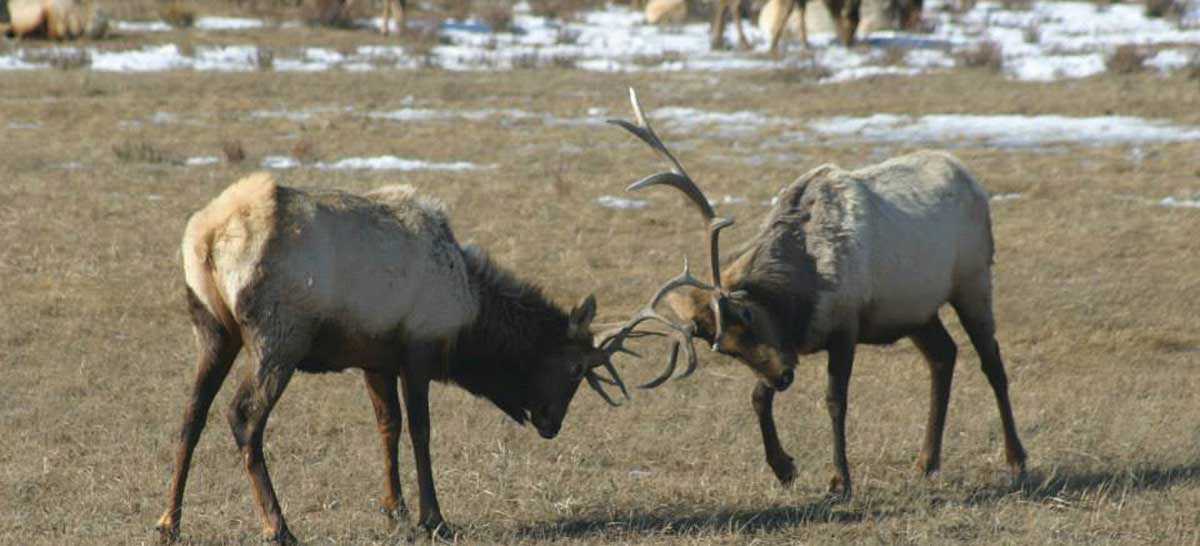The Wyoming Game and Fish Department (WGFD) remains concerned about chronic wasting disease and how it may affect the future of Wyoming’s deer, elk and moose, and is moving forward with efforts to manage the disease. CWD is fatal for those big game species and recent research in Wyoming shows CWD is likely affecting some deer populations in areas with a high prevalence of the disease.
“When CWD is found on elk feedgrounds, we will all be faced with some difficult discussions regarding elk management in western Wyoming,” said Brad Hovinga, WGFD Jackson regional wildlife supervisor. “Game and Fish has been working to lay the groundwork to minimize impacts and be prepared, but we realize this is a serious wildlife dilemma where solutions will require broad public support and a collaborative approach that includes help from partner agencies, elected officials, sportspersons, the general public and local communities.”
WGFD conducted surveillance for CWD throughout Wyoming for more than two decades. Upon discovery of a CWD-positive moose in Star Valley in 2008 and positive mule deer near Pinedale and Thayne in 2017, WGFD officials believe CWD will arrive in elk at feedgrounds in the future.
Although the disease has not been detected in elk wintering on any of Wyoming’s 22 feedgrounds or the National Elk Refuge to date, WGFD is concerned about how CWD’s arrival on feedgrounds will affect elk populations in western Wyoming. WGFD and the U.S. Fish and Wildlife Service have provided supplemental feed to elk during the winter months for more than 100 years. Feedgrounds maintain elk population objectives while also maximizing separation of elk from cattle to prevent property damage and minimize brucellosis transmission to cattle. However, feedgrounds concentrate large numbers of elk in small areas for several months, increasing the potential for the spread of diseases among elk, including CWD.
Knowing this, WGFD has implemented several initiatives relating to elk feedgrounds and CWD based on the Chronic Wasting Disease Management Plan. These include:
Increased CWD personnel and surveillance — WGFD has re-assigned personnel to fill regional disease biologist positions that focus on monitoring and addressing a broad array of diseases, including CWD. In addition, seasonal CWD feedground biologists in the Jackson and Pinedale regions focus specifically on CWD monitoring and management actions on elk feedgrounds and surrounding winter ranges. Any animal exhibiting potential symptoms of CWD is lethally removed and sampled. Game wardens, wildlife biologists and other employees are trained to collect CWD samples whenever possible (e.g. hunter-killed animals, vehicle-killed animals and targeted removals) in an effort to maximize sample collection and associated disease detection.
Elk feedground management — Disease research on feedgrounds has shown modification of hay distribution to elk over a much larger area in a grid pattern will decrease elk density while feeding. Discontinuing feeding as early as possible in the spring also can lower disease transmission among elk. WGFD is working toward implementing these two management actions on elk feedgrounds where conditions allow. Additionally, removing elk carcasses from feeding areas when they die and properly disposing of them can limit disease transmission and is a management priority on all feedgrounds.
New research — WGFD is collaborating with the University of California at Berkeley, the National Elk Refuge, Grand Teton National Park and the Bridger-Teton National Forest on new research h in the Jackson area to determine elk movement patterns and seasonal habitat selection. Part of this research is aimed at monitoring large carnivores in relation to elk movements and habitat use to determine why there is a decline in native winter range use and to re-evaluate the potential for elk to spend the winter away from feedgrounds and off of private land.
Education — WGFD is staying updated on new information and research regarding CWD and is increasing efforts to share new information within the agency, with partner agencies and with the public.
In order to make the best management decisions possible, WGFD is developing a plan to create local working groups in Teton, Sublette and Lincoln counties to serve in an advisory role to Game and Fish about elk feedground management related to CWD. These groups would work closely with the department to understand the current science of CWD, thoroughly explore the pros and cons of various management options including changes to feedground operations, develop and support creative solutions, help facilitate public communication and develop future research and monitoring questions. Game and Fish will release more information about these local working groups when funding is secured to move forward with the project.
(Photo source: Randy Mead)
